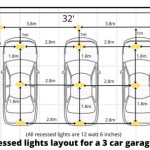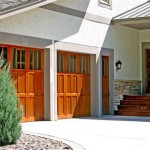Essential Aspects of Garage Door Contact Sensors
Garage door contact sensors are crucial security devices that provide peace of mind by monitoring the status of your garage door. These sensors play a vital role in home automation systems by triggering alerts or actions based on the door's position. Understanding the essential aspects of garage door contact sensors is vital for effective home security.
Types of Garage Door Contact Sensors
There are two main types of garage door contact sensors:
- Magnetic Sensors: These sensors consist of a magnet attached to the door frame and a sensor on the door itself. When the door is closed, the magnet and sensor align, completing the circuit and indicating a closed door. When the door is open, the circuit breaks, signaling an open door.
- Optical Sensors: These sensors use an infrared beam to detect the opening and closing of the door. When the door is closed, the beam is unobstructed, and the sensor detects a closed door. When the door is open, the beam is broken, indicating an open door.
Benefits of Garage Door Contact Sensors
Garage door contact sensors offer numerous benefits, including:
- Enhanced Security: Contact sensors alert homeowners to unauthorized entry attempts or when the garage door is left open accidentally, increasing home security and deterring burglars.
- Remote Monitoring: With smart home integration, contact sensors allow homeowners to monitor the status of their garage door remotely through a smartphone app or web interface.
- Convenience: Automatic lighting or other smart home actions can be triggered when the garage door opens or closes, providing convenience and added security.
- Peace of Mind: Knowing that your garage door is secure and monitored provides peace of mind and reduces anxiety about potential break-ins.
Factors to Consider When Choosing a Garage Door Contact Sensor
When selecting a garage door contact sensor, several factors should be considered:
- Compatibility: Ensure the sensor is compatible with your garage door opener and any smart home system you are using.
- Type: Both magnetic and optical sensors have their advantages and disadvantages. Determine which type suits your needs better.
- Durability: Choose a sensor designed to withstand harsh weather conditions and potential tampering attempts.
- Installation Ease: Select a sensor that is easy to install, either professionally or by a do-it-yourselfer.
- Features: Consider additional features such as tamper alerts, low battery indicators, or notifications.
Professional Installation vs. DIY
Professional installation of garage door contact sensors is recommended for optimal functionality and reliability. However, DIY installation is possible for those with basic electrical知識. Follow the manufacturer's instructions carefully and ensure the sensor is properly aligned and tested.
Maintenance and Troubleshooting
Regular maintenance is crucial to ensure the proper functioning of garage door contact sensors. Periodically check for any loose connections, damage, or obstructions that could affect the sensor's performance. If you encounter any issues, such as false alarms or a lack of response, refer to the manufacturer's troubleshooting guide or consult with a professional.
Garage door contact sensors are essential security devices that provide peace of mind and enhance home automation. By understanding the essential aspects of these sensors, you can effectively protect your home, monitor its status, and enjoy the added convenience they offer.

Garage Door Closure Sensor

Garage Door Closure Sensor

Simple Garage Door Sensor Digi International

Flair Overhead Garage Door Contact Sensor With L Bracket Alternate To Odc 59a

Adt Garage Door Contact Hardwired Zions Alarms

Diy Garage Door Sensor Techcrunch

Sentek Metal Surface Mounted Garage Door Contacts Alarm Sensor Bs2072 China Magnetic Switches Made In Com

Skylink Wireless Garage Door Sensor For Net Connected Home Security Alarm Automation System Gs Mt The Depot

The Best Smart Garage Door Opener Controller Of 2024 Reviews By Wirecutter

Garage Door Closure Sensor
Related Posts








